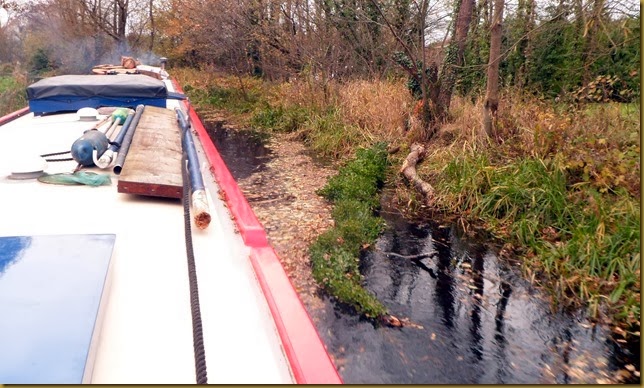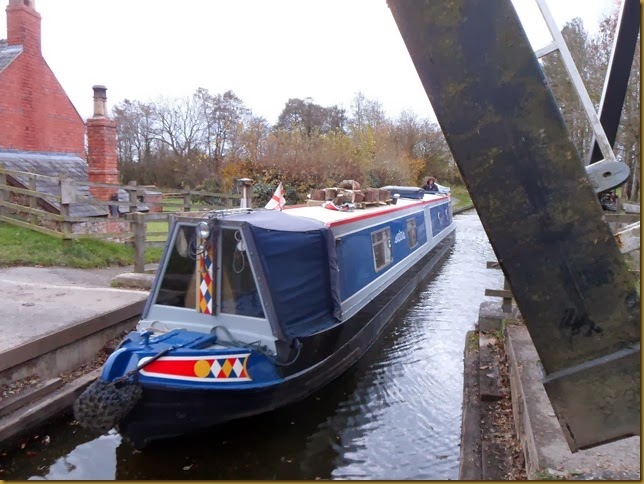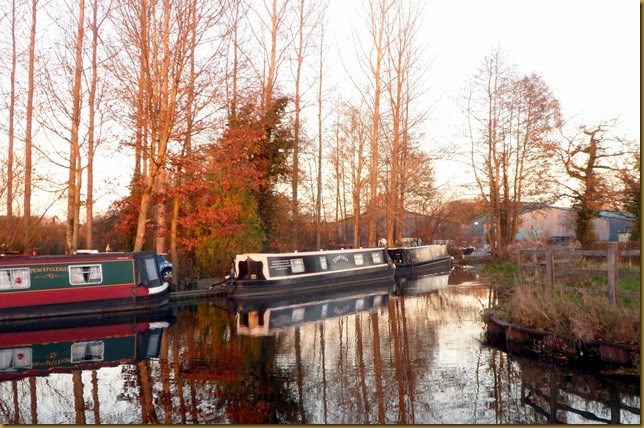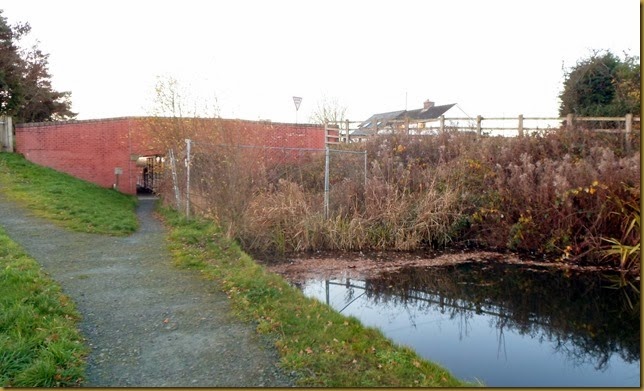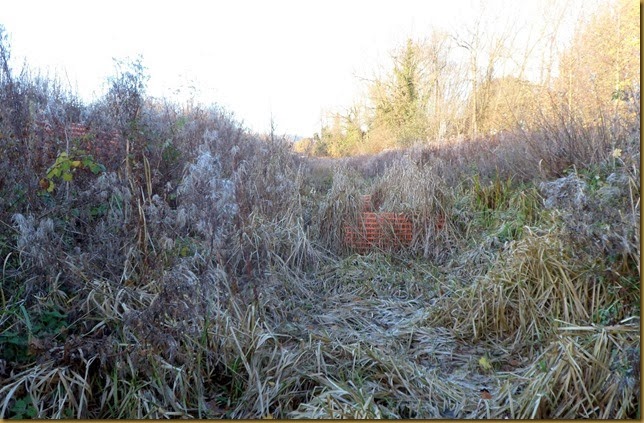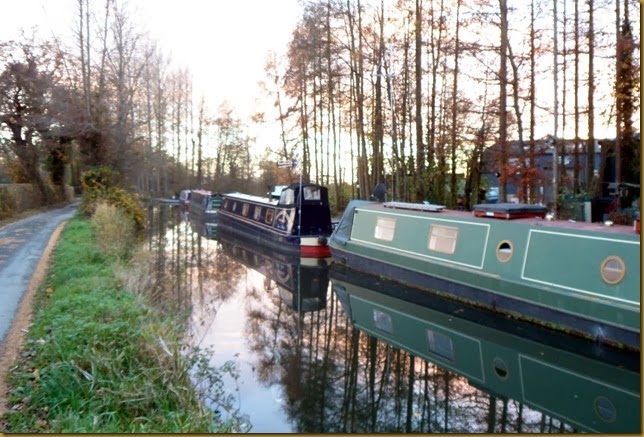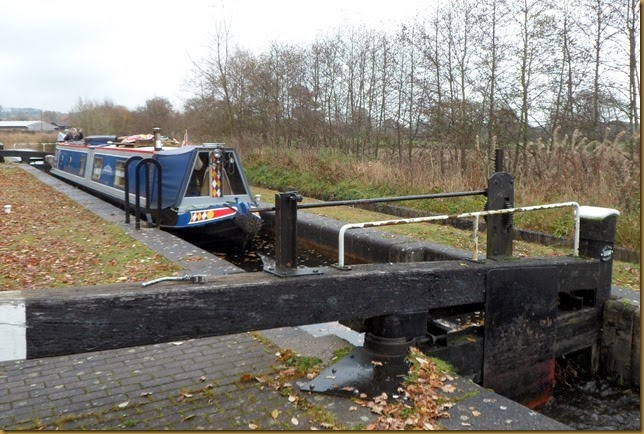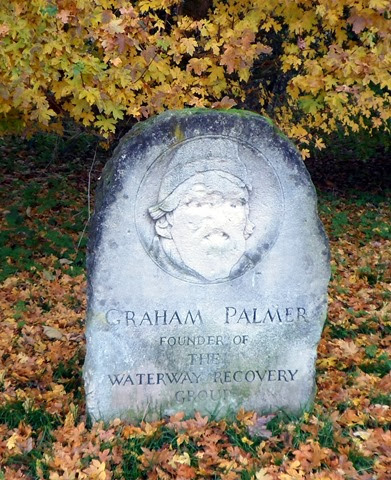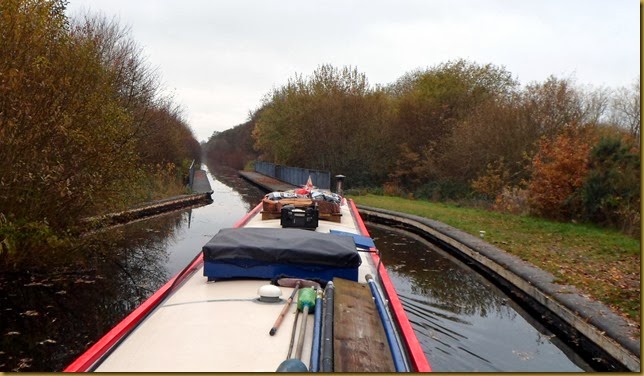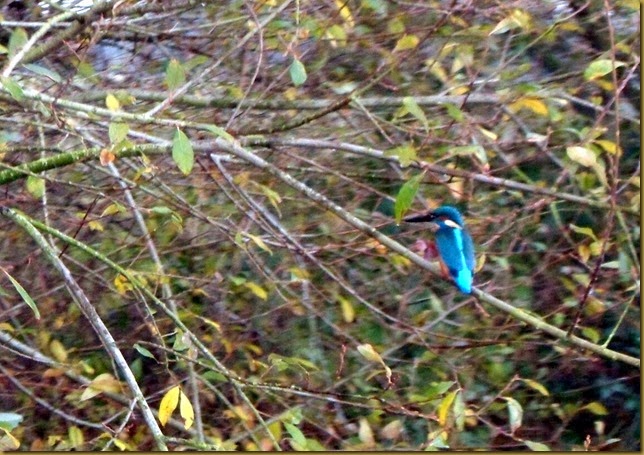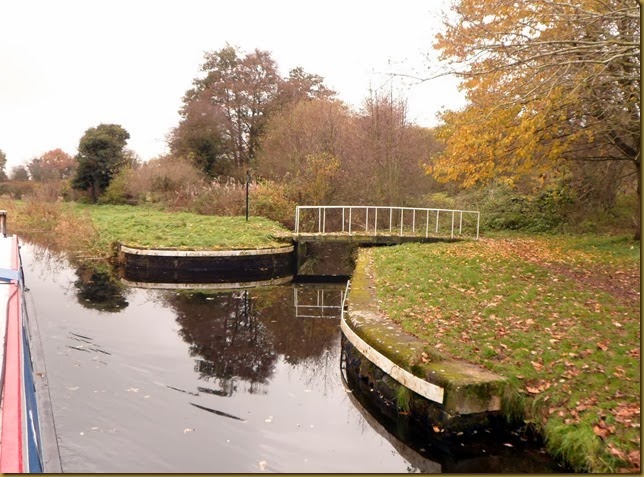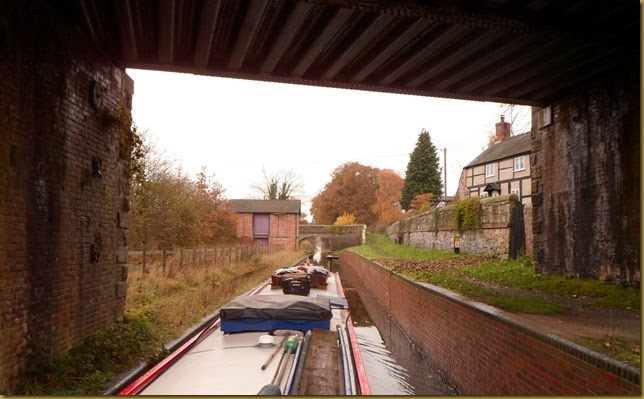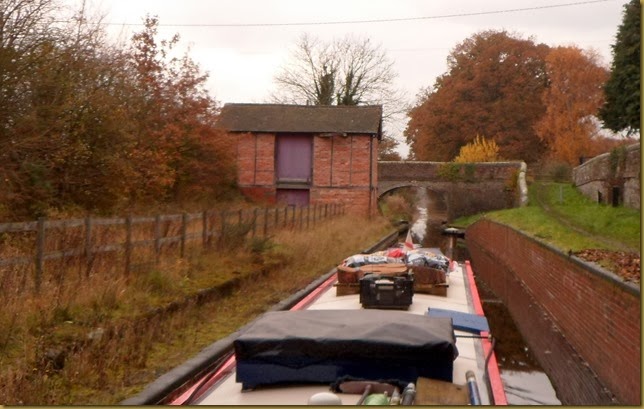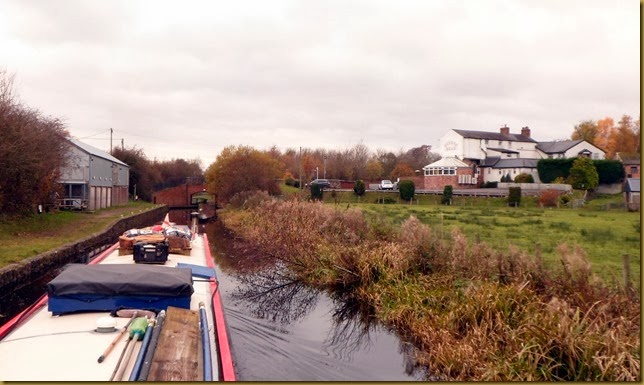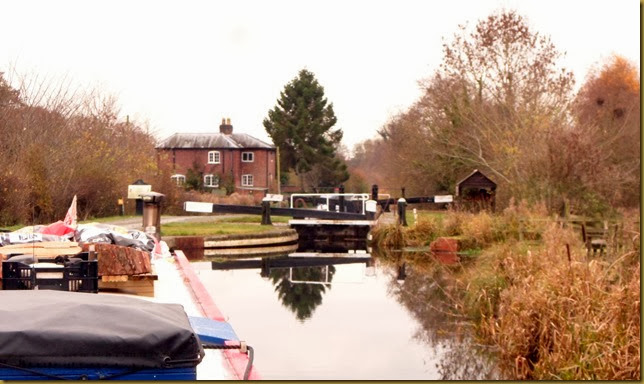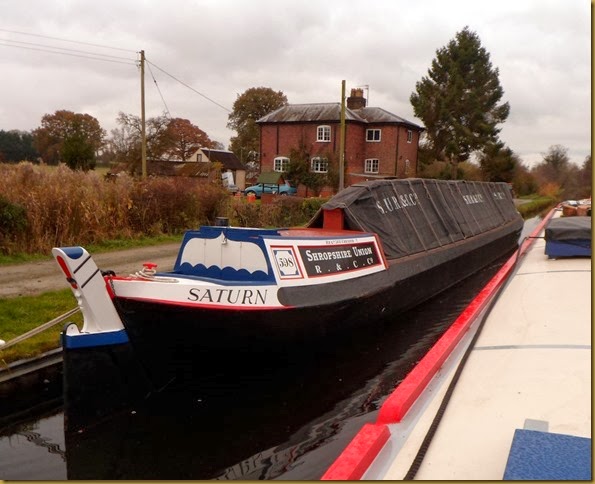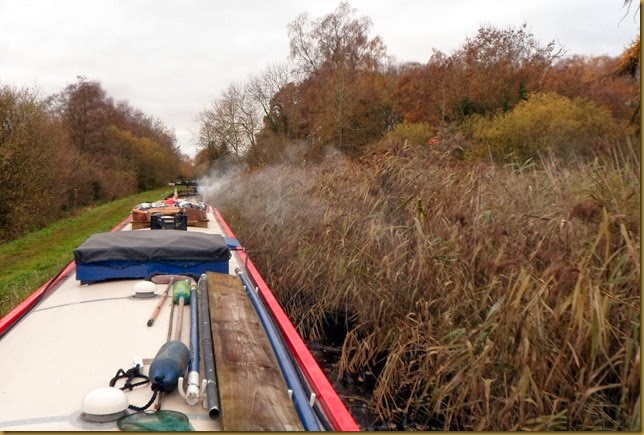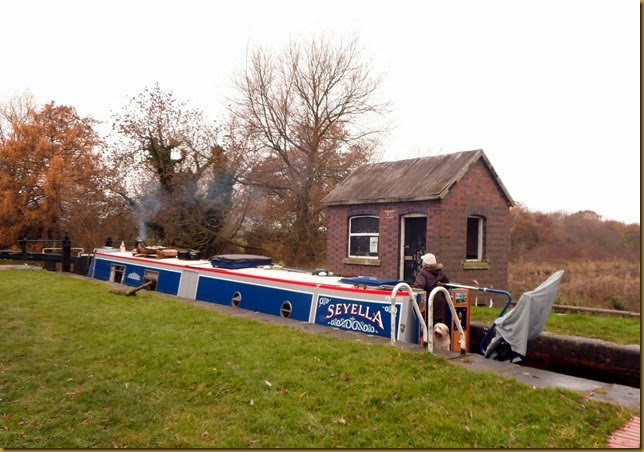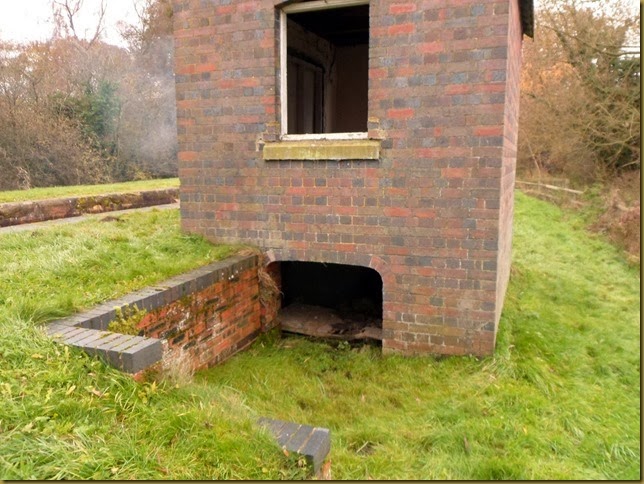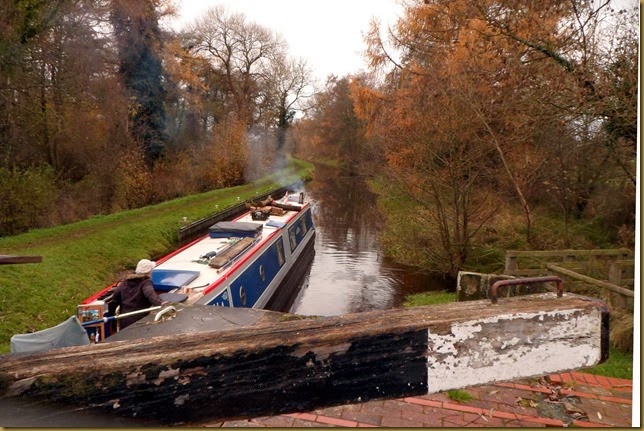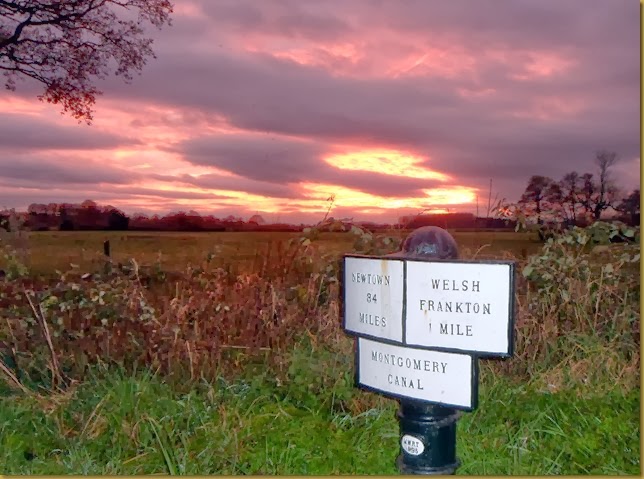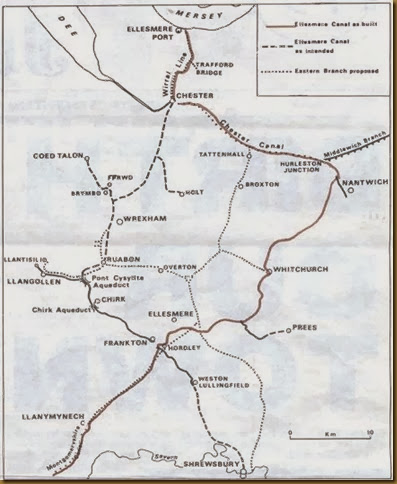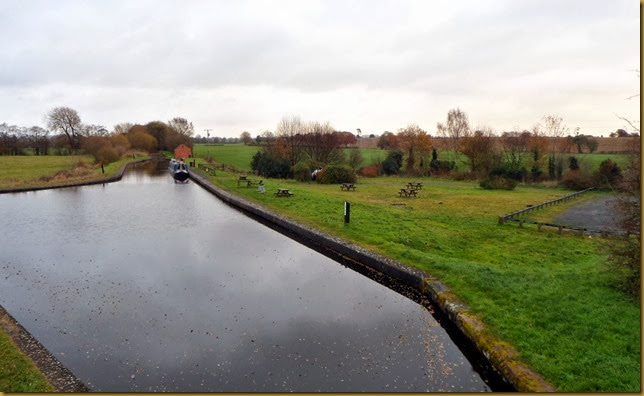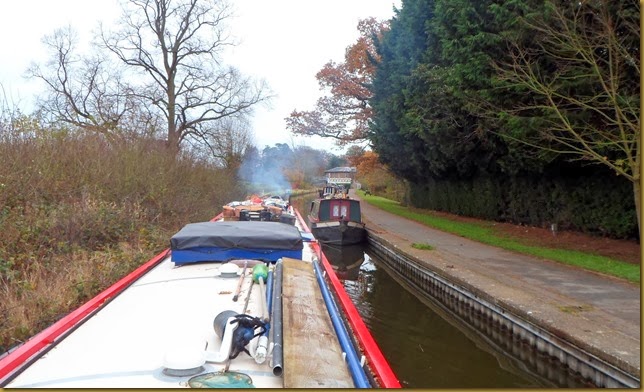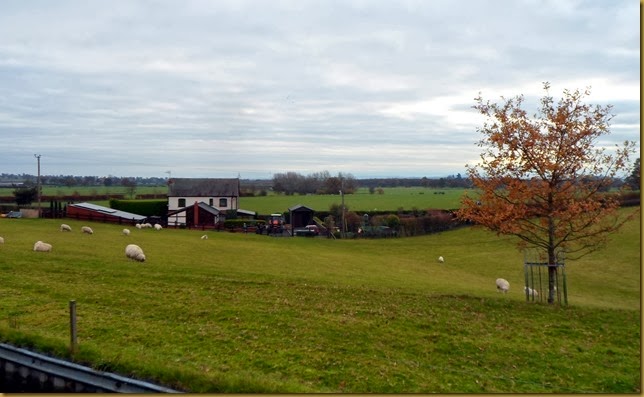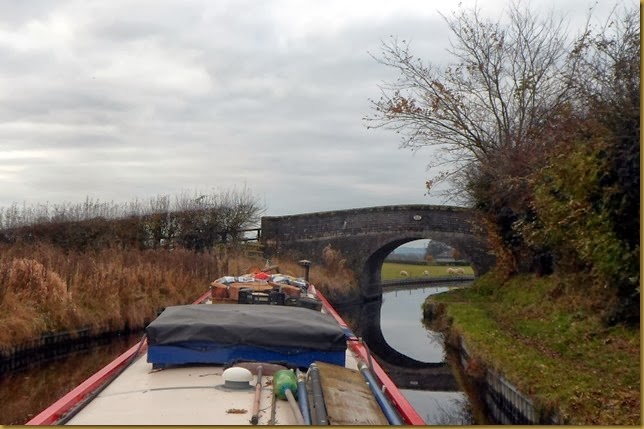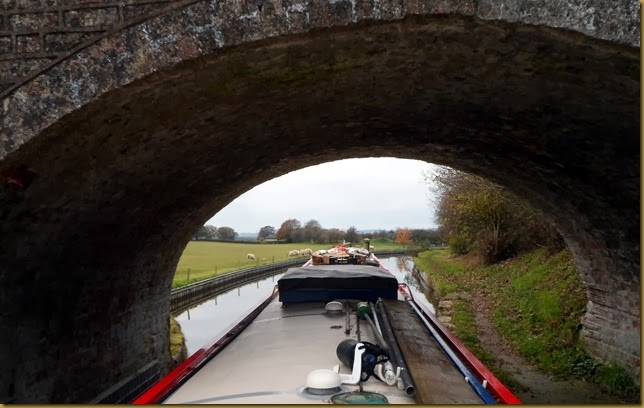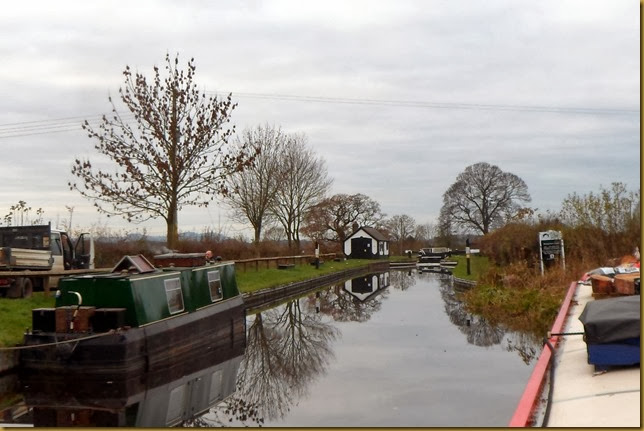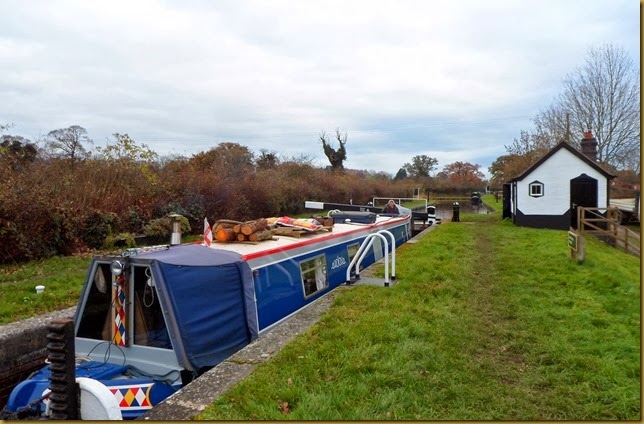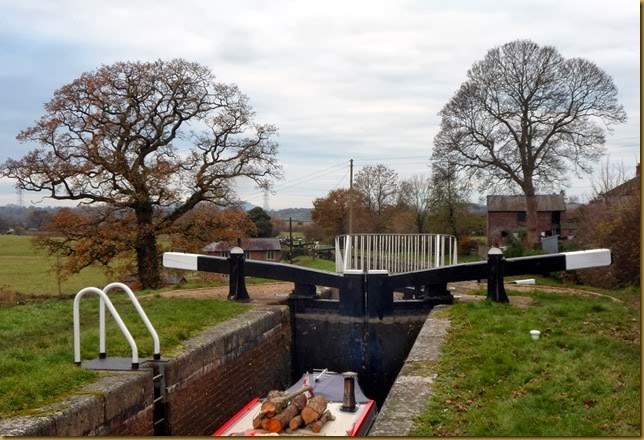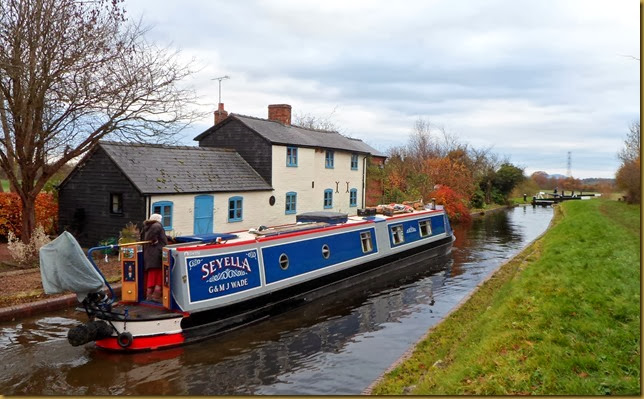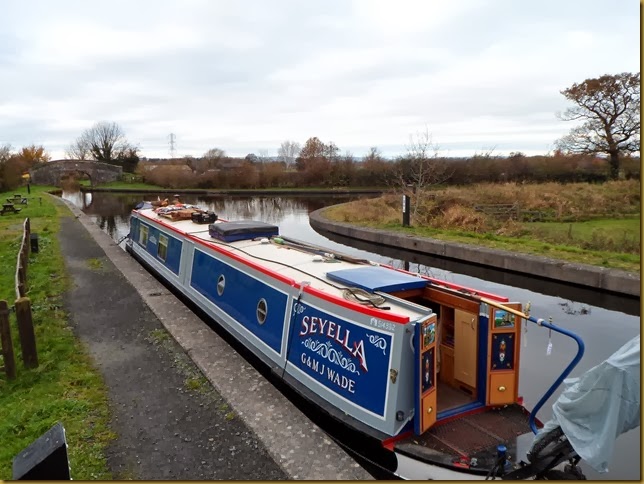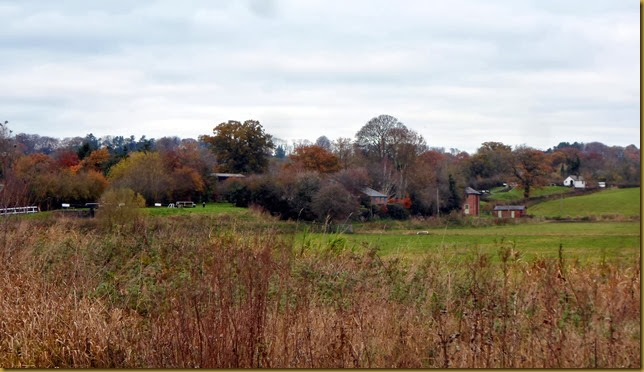We didn’t get going till mid afternoon, it was blowing a hooley in the morning but had eased a bit after lunch.
The approach to Park Mill Bridge is almost obscured by reeds

Beyond the bridge the canal is narrow, shallow and clogged with autumn leaves, making progress slow with frequent “chucking back” to clear the prop.
The odd blown down tree didn’t help, either.
Hmm, might have that on the way back….
Maesbury Marsh sits alongside the canal, and developed to take advantage of it. There’s the chimney of a redundant bone meal and glue factory, and the Navigation Inn was originally canal-side warehousing/
Approaching Maesbury Marsh

There’s a lift bridge which replaced the lowered canal bridge next to the Mill Arm. We had to do this twice, there’s no mooring opportunities between here and Gronwyn Bridge, the current end of the navigation.
Croft Mill Bridge
Oddly, the Mill Arm just alongside the bridge went to Peate’s Mill. I wonder what happened to Croft Mill.
We turned around at Gronwyn Wharf, and returned to moor up near Canal Central, the shop/tea room/B&B near Spiggot’s Bridge.
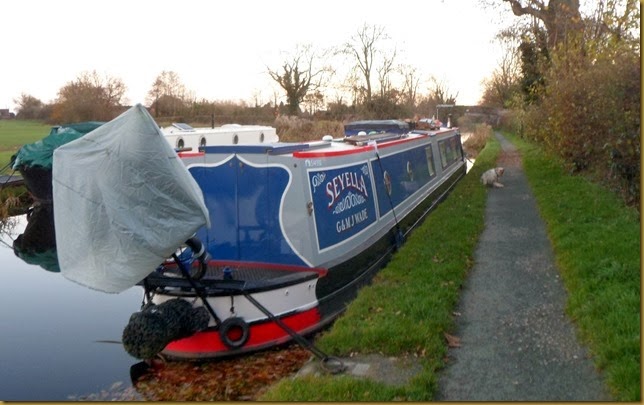
And yes, unless anyone else has come down Frankton Locks since we left Weston on Thursday, we are the only visiting boat down here at the moment!
This morning, bright but chilly, Meg and I set off to inspect the work in progress beyond Gronwyn Bridge.
Croft Mill Bridge…
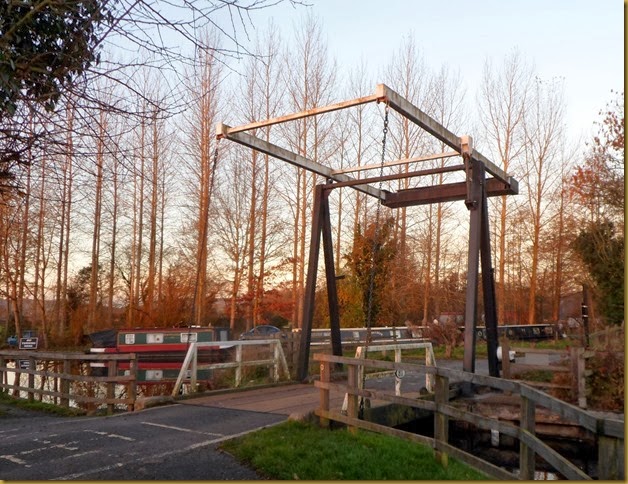
…and the Mill Arm, now used for moorings
Gronwyn Bridge, end of the line for now.
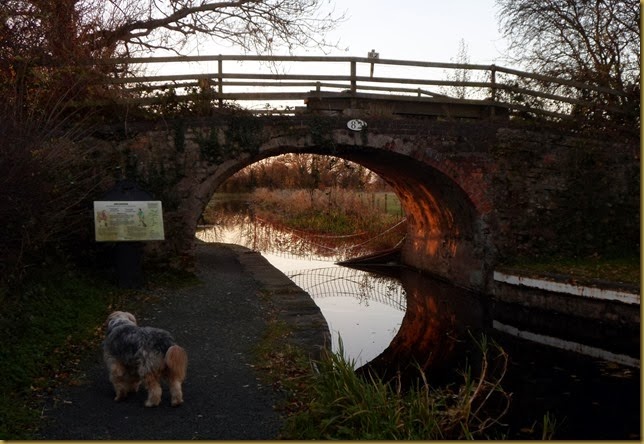
The canal is in water from here to Redwith Bridge, but there’s no winding hole to turn around so it’s not open for navigation yet.
There’s a new lift bridge for farm access before Redwith Bridge
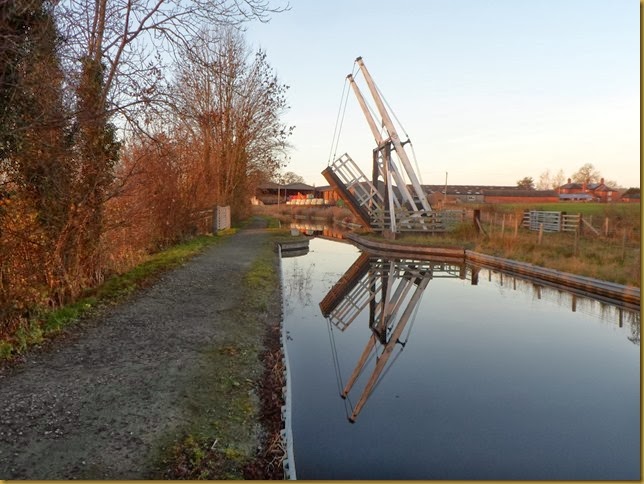
I wonder how low it’ll be before visiting boats break the placid surface?
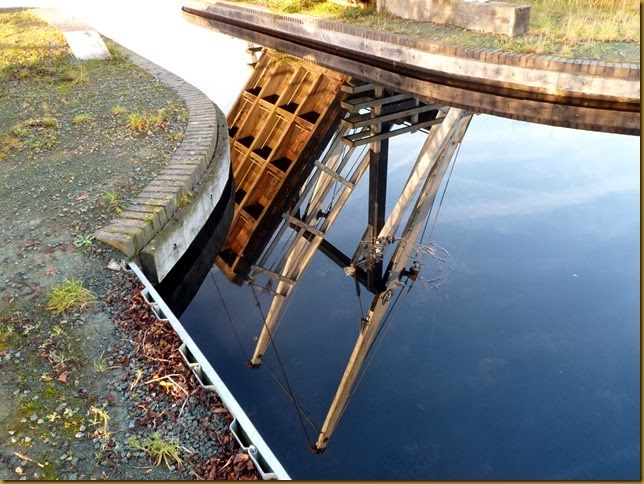
Redwith bridge had to be rebuilt to allow headroom for boats, it had been lowered for safety while the canal was derelict. There’s an earth dam at the bridge keeping the water out of the next section.
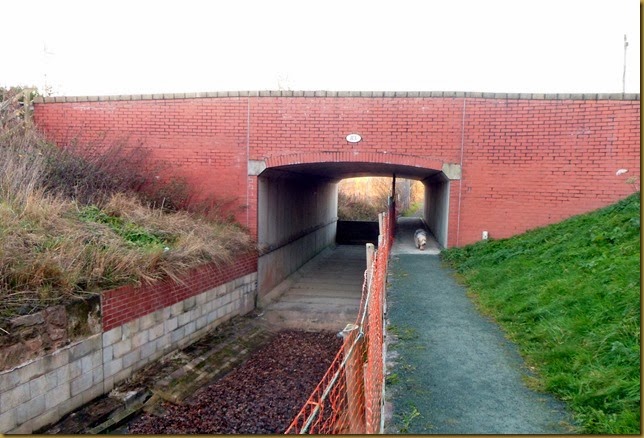
There’s a ¼ mile stretch now that’s been lined with a waterproof membrane, then paved with concrete blocks for protection. The profile is saucer-shaped, much as it would have been originally.
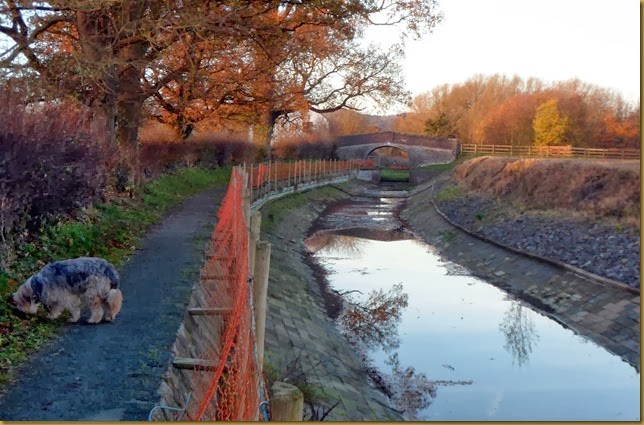
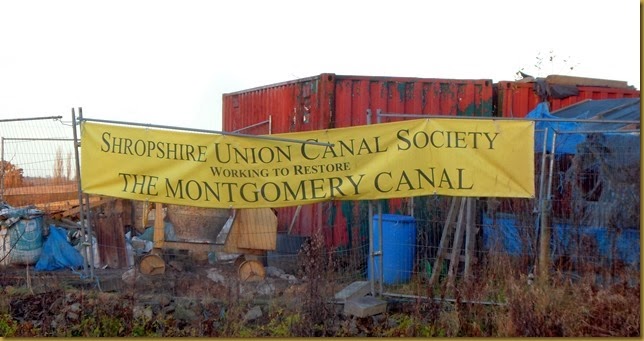
….Since 1968. Lots more info on the website
 At Pryles Bridge the channel, although lined in the past, has become overgrown with reeds and grasses.
At Pryles Bridge the channel, although lined in the past, has become overgrown with reeds and grasses. Standing in the canal bed.
Overnight frost still lingers in the shade.
This afternoon we had a short walk up the Mill Arm, round to the old millpond.
Moorings on the arm….
….and in the basin at the end
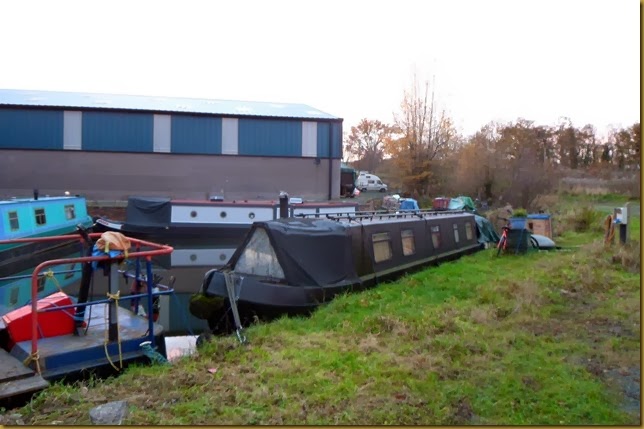
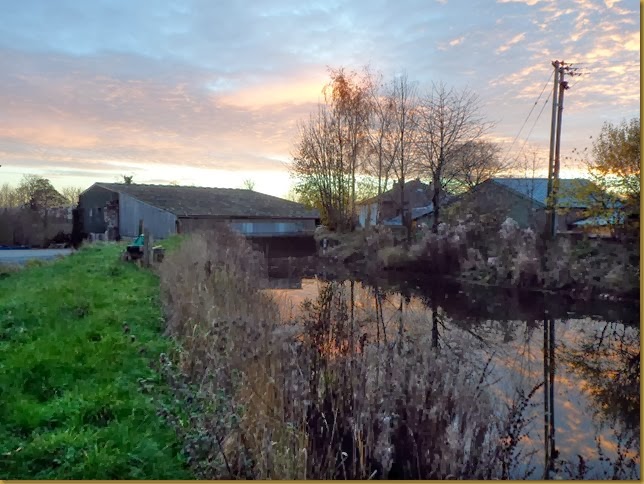
The millpond
The mill was originally water-powered, using water diverted from the Morda Brook. This same water is now used as a feeder for the canal.
The sun was setting as we walked back to the boat.
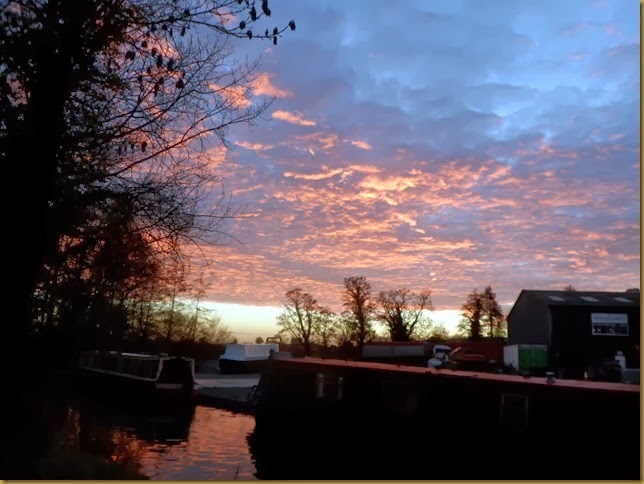
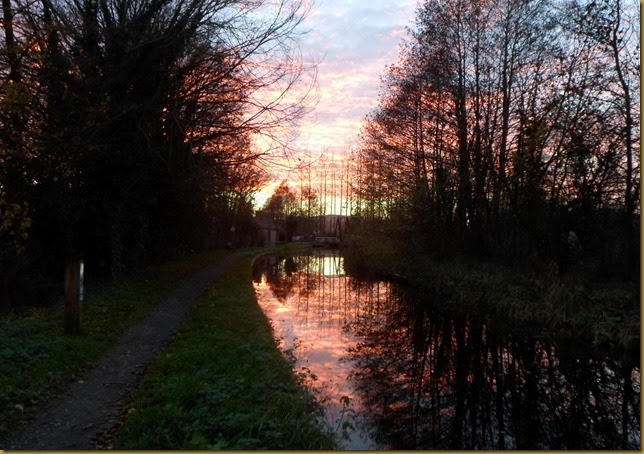
I’d had a quick chat with a local chap yesterday, as I walked the dog. I wanted to know if there was anywhere local to get a paper this morning.
Turns out that the nearest place is in Knockin, about 2½ miles away. I was prepared to get John Sage off his rack and cycle over there, but there was a knock on the side of the boat at half past nine, Rick (the local chap) offering me a lift to the shop. What a fine gesture.
More so because I suspect he made a special trip for me. He claimed the shop didn’t have what he wanted…
Did I say the shop is in Knockin? Understandably it’s called The Knockin Shop.
Not sure if we’re moving on the return journey tomorrow, or staying another day. I failed to find St. Winifred’s Well yesterday, I might try again in the morning. I’ve got a better idea of it’s location now.
Locks 0, miles 1½
